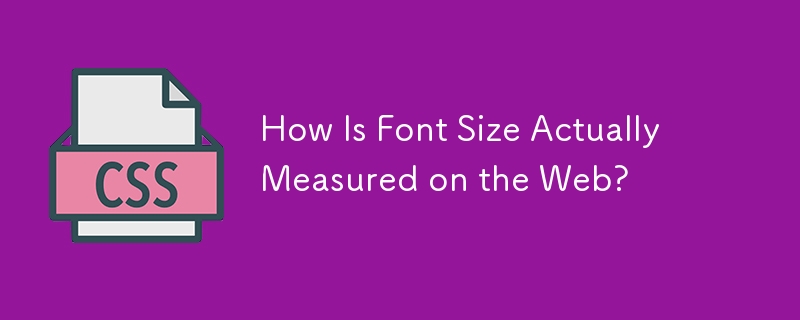

Understanding Font Size Calculation
Font sizes are an essential aspect of web design, but how do you determine the physical space they occupy in pixels?
Measuring Font Height
In typography, font size is typically measured in pixels (px) or points (pt). However, it's important to understand that font height refers to the entire line height required to display all characters, including those that extend above or below the baseline (e.g., "j" or accented letters).
Font Width
The width of glyphs (characters) varies across fonts, and there are two main types: proportional and fixed-width. Proportional fonts allocate space based on the shape of each character, while fixed-width fonts provide equal spacing for each character.
Font Rendering and Variability
Fonts render glyphs differently, meaning that the same character may not be the same height across fonts. This is due to the unique rendering algorithms employed by each font.
Sizing Issues
Web Considerations: On the web, numerous factors can affect font size rendering, including browsers, default fonts, zoom levels, and operating system settings.
Print vs. Pixels: Pixel sizes are not always directly comparable to print sizes. At small sizes, fonts may be rendered differently to preserve their shape.
TL;DR
In short, font size refers to the line height required to display all glyphs. However, on the web and in different contexts, actual rendering and sizing can vary. It's therefore crucial to consider the font's rendering algorithms and the specific context in which it will be used.
The above is the detailed content of How Is Font Size Actually Measured on the Web?. For more information, please follow other related articles on the PHP Chinese website!




